Synthèse et synthétiseurs
Publié le 18/07/2022
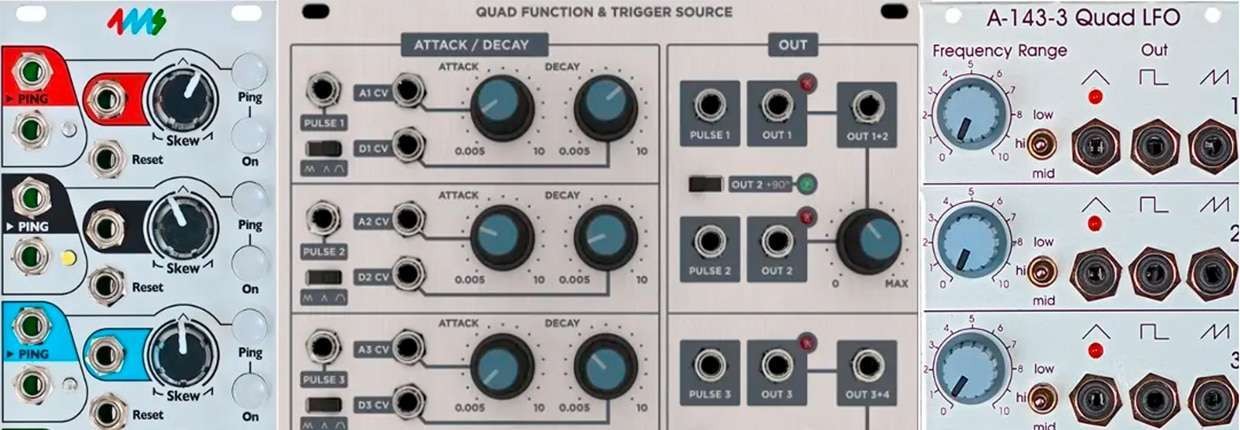
Music is a medium to generate and communicate emotions. One of the tools used to activate the tension-resolution mechanism (to keep the listeners attention high) is the variation of musical events over time.
In the modular synth world we do have several methods to get to the objective. Among those, the use of a dedicated control signal is one of the most used.
Control signals are generated via a set of circuits that fall in the Functions Generator category.
When variations are periodic we use the Low Frequency Oscillators (LFO).
When the changes are triggered by the notes and the evolution over time of the sound features we use the Envelope Generators (EG).
These circuits are… oscillators so the work in the same way we had described when we talked about the Voltage Controlled Oscillators (VCO).
The main difference between LOFs and VCOs is the operating frequency range. The VCOs work over the audio band to generate sounds. The LFOs operate at very low frequency (even below 1 Hz).
To increase versatility, sometimes, the LOFs can be driven to generate audio frequencies so they can be used as a further signal source in the chain.
LFOs are capable of generating a wide variety of waveforms. We typically have triangles, sines, square waves. Sometimes even sawtooth are part of the game.
The majority of the LFOs generate periodic signals with parameters (frequency, amplitude and phase) eventually controllable via CV signals.
Every time you need a periodic variation you better ask for a LFO.
VCO amplitude or frequency, Filter cutoff or resonance, VCA gain are the most typical examples but the concept is applicable to all CV controllable parameters in a modular synth chain.
Also the modulation associated with the audio effects are obviously to be courtesy of the LFOs.
Tremolo, Vibrato, Phaser, Flanger and Chorus at first (in this case the modulation is the inherent part of the effect) but also delay and reverb can be modulated to induce subtle parameter’s variations to delay time or reverb tails.
As stated before, sometimes can be useful to control via CV also LFO parameters. Here some examples keeping in mind that possibilities can be a lot more:
For all these applications the control voltages are generated by a class of circuits we will be talking about in the next sections.
The name of this circuit category comes from the fact that they were originally thought to control the variation over time of the signal’s volume. The resulting curve is, indeed, called envelope.
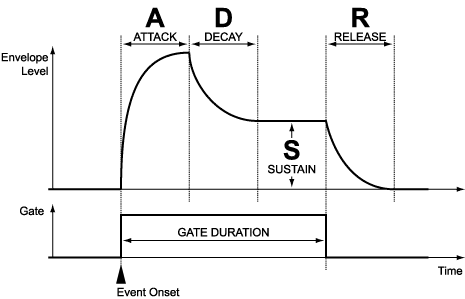
The most typical version has four segments defined as:
So now you know where the acronym ADSRcomes from. It is worth mentioning that A, D, and R are time intervals. S is a level and its value indicates the level reached after the attack transient (defined by the Attack and Release phases) and before the signal’s tail starts (with its length is determined by the R value).
The ADSR signal to be coherent with the plaid note must be synchronized to the Gate signal as per the above picture.
We do have simplified versions of the Enveloper such as the infamous ADS envelope installed on the Mood Model D. They can also be more complex especially when the system is dedicated to pad generation.
The original usage of the Envelope Generator was to control the VCA’s volume evolution. Since then many other applications have been found for the circuit.
The first to come to mind is the time evolution of the Filter’s behavior.
In this case Cutoff Frequency or Resonance (or both!) can be controlled with an EG signal that can also be inverted in phase.
Also in this case, though, the limit is the musician’s creativity and a lot more applications can be found in real life.
Let’s close this post with some practical examples of LFO and/or Envelope Generator just to give the reader an idea about what can be found in the market.
Every brand has its own solutions. Go get a better idea of what is available by browsing the LFOand Envelope Generators pages of the Milk Audio Store website.
A-143-3 Quad LFO is a simple module made by four LFOs with dedicated outputs for triangle, square and sawtooth signals. They can be only controlled manually.
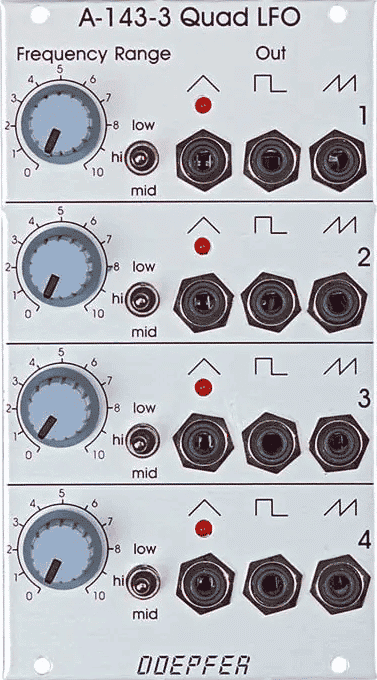
Make Noise Maths is a quite complex module (it is a Functions Generator) that can either be an LFO or an Envelope Generator and much more.
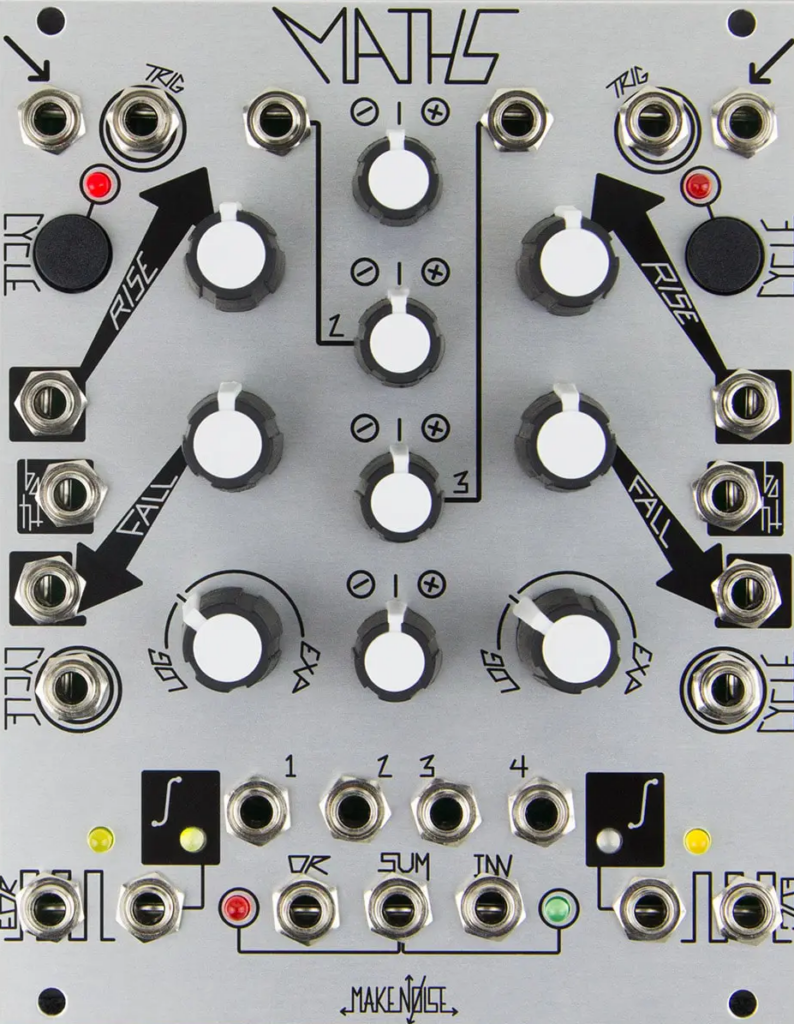
This is a good example to show how the designer’s creativity can be used to provide solutions to musicians and producers.
It is capable of generating linear, exponential, logarithmic functions that can eventually be looped to generate periodic signals.
In LFO mode the signal period can go from 25 min to 1 msec (that means 1 Khz) for applications that go from Drone Music to audio signals generation (up to 1 KHz).
Cre8audio Function Junction is another quite complex module capable of suporting several control needs.
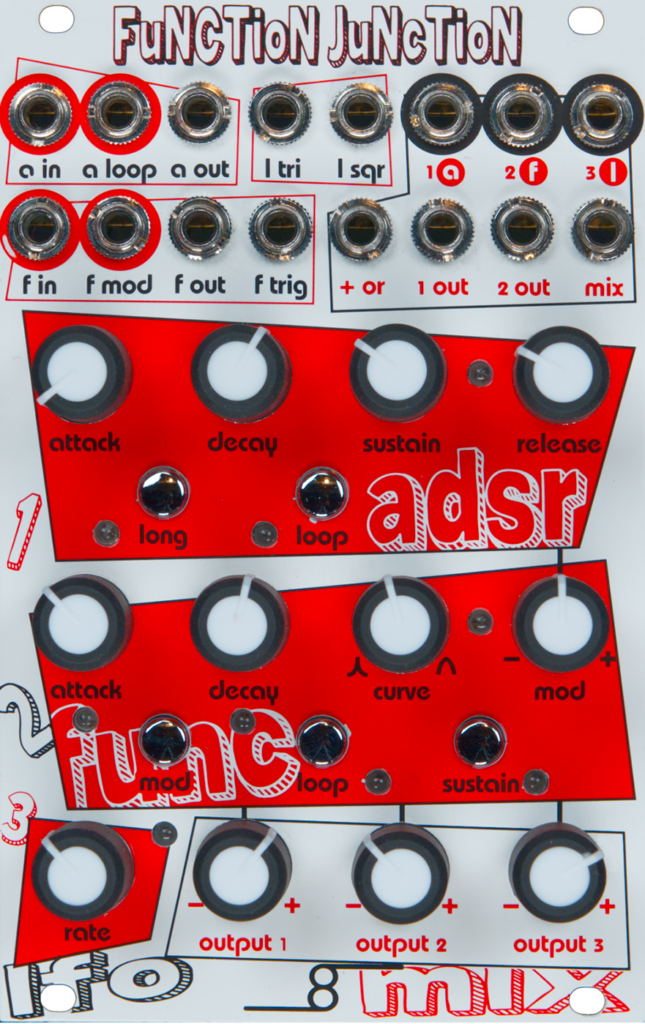
It includes ADSR, function generator, LFO and mixer.
The ADSR is a 4 segments fully analog circuit. It can be looped and or combined with a dual LFO (triangle and square waves). The unit has also an useful three channels mixer
So, go get your modules to generate control your signals and support your very own creativity. Have fun!
Rejoignez-nous dès aujourd'hui et profitez de 5% de réduction sur votre prochaine commande !

Chariot vide